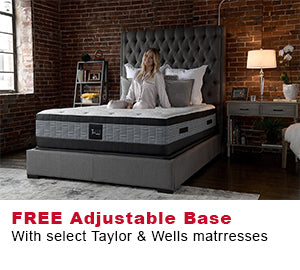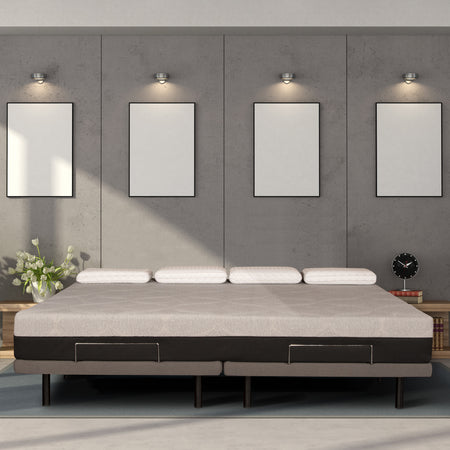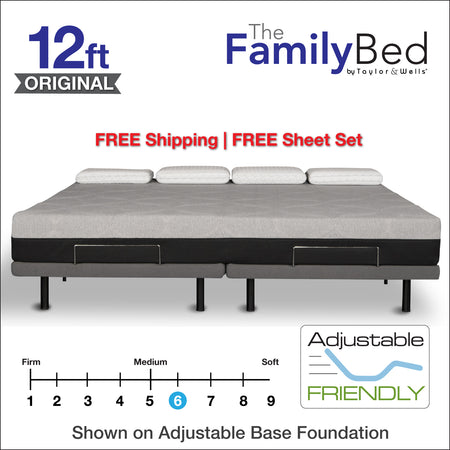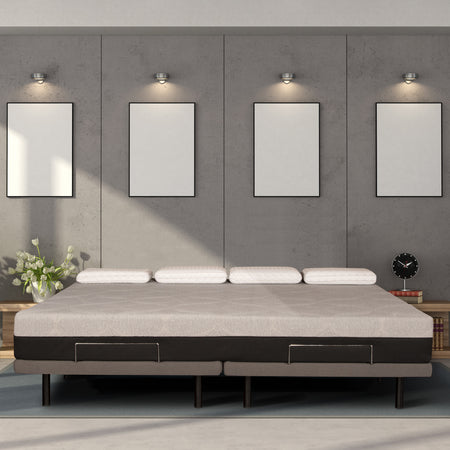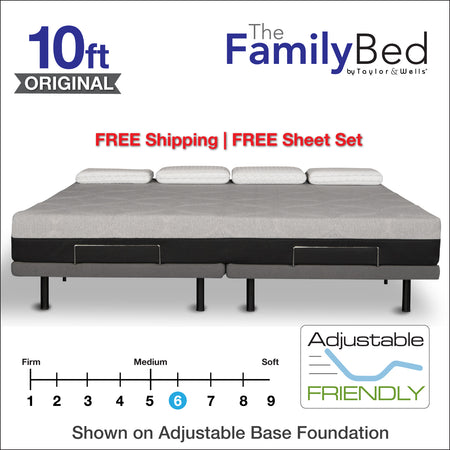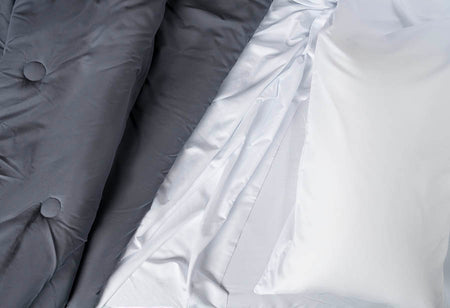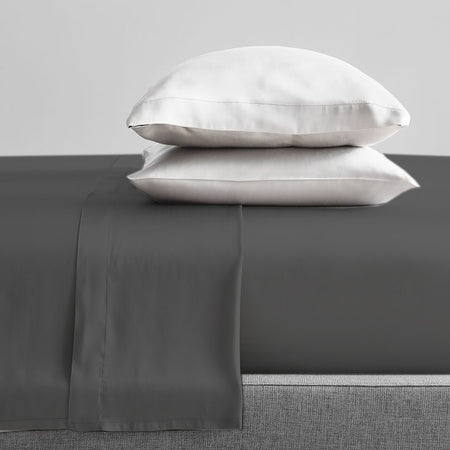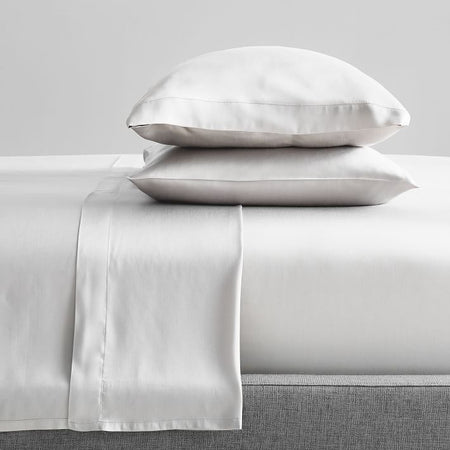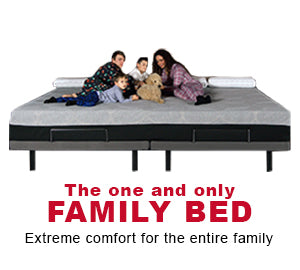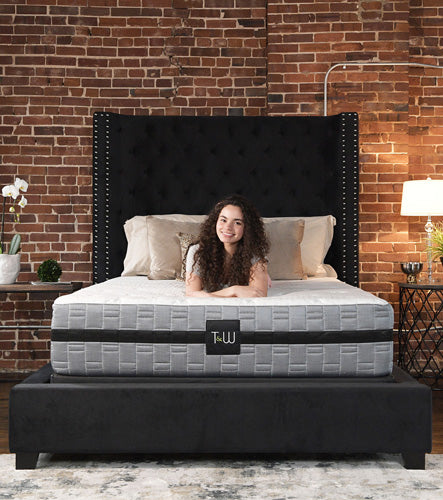Buying a new mattress used to be simple. Years ago, there weren’t many mattress types from which to choose. We were kind of stuck with lumpy, bumpy, or hard. And if you had enough money, you could upgrade from “squeaky every night” to “squeaky once in a while.” That was it.
Good Riddance To The Good Ol’ Days
Not everything from yesterday used to be high quality. This is especially true with mattresses. Sure, most of them looked ok on the outside. In fact, getting a new mattress was like a dream come true. But, in reality, it was more like a living nightmare because of what materials were used inside the mattress by some unscrupulous manufacturers. It’s too gross to get into. Just know that the federal government had to step in many years ago, which is why new mattresses come with those big tags, guaranteeing the materials used inside are new.

Tempur Pedic and Other Memory Foam Mattresses
Tempur Pedic is a brand name, not the name of a specific mattress material. It’s a high-quality version of memory foam, and it has become so popular many people use Tempur Pedic to describe memory foam. It’s similar to how Kleenex has become the generic term for facial tissue.
In case you are ever on Jeopardy, here’s the full monty: Tempur Pedic is one kind of memory foam. And memory foam is one kind of polyurethane foam. Memory foam was developed by NASA as a way to provide astronauts with comfort and support during space missions. No one wants an astronaut waking up sore because of pressure points while sleeping in a cramped space capsule.
A List of Mattress Materials and Mattress Types

There are literally dozens of fabrics, compounds, and materials used to make mattresses. We are going to cover the most popular. Please note sometimes people use the name of the material to refer to a mattress type.
1. Innerspring Mattress
As the name suggests, these mattresses use springs to provide comfort and support. The springs are made of steel, and there are a variety of spring configurations that have been developed over the years. Some configurations include Bonnell coils, encased or pocketed coils, and offset and continuous coils.
Benefits: Lower Price Range
Generally, steel coils cost less than other materials. This makes it less expensive to manufacture mattresses, and it’s usually reflected in the price. If budget is a priority, look for innerspring mattresses.
Good Air Circulation
A coil mattress uses fewer layers to provide comfort and support. This allows the mattress to breathe every time you move during the night. Airflow helps mattresses stay fresh, and it helps to reduce heat build-up.
Familiar Feel
You can expect a traditional feel from innerspring mattresses. However, some have more bounce than others, and some, with pocketed coils, have less.
Drawbacks: Heavy
The weight of steel coils can add up. More coils can provide more support, but this can make the mattress challenging to move around.
Too Much Bounce
Depending on how the coils are placed inside the mattress, motion transfer can become an issue. If you sleep alone, this isn’t much of a problem.
2. Memory Foam Core
A memory foam mattress contains a type of polyurethane foam known as viscoelastic foam. During the manufacturing process, special chemicals are added to improve performance. When you press your hand down on this type of foam, it leaves an impression, and then the mattress slowly returns to its original shape.
Benefits: Pressure Point Relief
As we get older and heavier, the pointy parts of our bodies can become sensitive, especially when we sleep. The unique “give” of memory foam helps relieve the pressure around these areas while providing enough support elsewhere.
Reduced Motion Transfer
One aspect that makes memory foam so popular is its ability to isolate motion so that your sleeping partner won’t feel it when you move around or get out of bed.
Dust Mite Resistant
Memory foam is hypoallergenic, and it helps combat the spread of dust mites. Dust mites feed on dead human skin cells that we shed while we sleep; the dust they produce as waste is a known cause of allergies.
3. Hybrid Mattress
This is a relative newcomer to the sleep industry. Hybrid mattresses combine the best aspects of foam with the best features of coil springs. The foam used can be memory foam (viscoelastic foam) or natural latex, or synthetic latex foam.

Benefits: Excellent Versatility
These mattresses vary depending on how many layers, which type of foams, and which kind of steel coils are used. This provides an almost unlimited variety of performance levels.
Superior Support
Whether you like an extra soft or firm mattress, chances are you will find what you’re looking for in a hybrid. You’ll be able to get the firmness you want without sacrificing support.
Drawbacks: Expensive
The complexity of manufacture goes up with these mattresses, as does the price you can expect to pay.
Heavy
Depending on the model you choose, a lot goes into making one of these mattresses, and the weight can add up.
How Rubber Trees Changed the Mattress Game
Natural latex rubber is harvested in a sustainable way from the rubber tree. The sap is collected and then processed into latex rubber used to make mattresses. Latex provides an excellent level of support and comfort as well as durability. Before latex, mattresses were made from coil springs and layers of fabric. Once natural latex rubber was introduced into the mattress market, it pushed manufacturers to revolutionize their production methods, increasing their drive for better-performing materials.
Pillow Top Mattresses Vs. Mattress Toppers and Mattress Covers
Pillow-top mattresses are known for their softness, comfort, and excellent support. Unfortunately, a mattress cover or topper is often passed off as an adequate alternative. This is not the case. Be wary of low-priced offers that cannot replace the performance and durability of a built-in pillow top.

Match Your Sleep Position
It can become confusing when you consider all the mattress materials and types available. The good news is that you can stay focused on your sleep position and habits. Overnight sleep studies have discovered a wide range of sleep behaviors among people of all ages. Get to know your habits and which sleep position you prefer. Some mattresses are better for some sleep behaviors, so the more you know about your own sleep preferences, the easier it will be to zero in on the mattress for you.
How to Ensure Your Choice is High Quality
Quality can be subjective, and as we already know, it can be difficult to choose from the dozens and dozens of mattresses available. A higher price doesn’t necessarily equate to high quality. Your best bet is to work with a sleep expert who will learn about your sleep habits and help you choose the right mattress. The best retailer will offer a sleep trial so that you can be sure you made the best choice.

